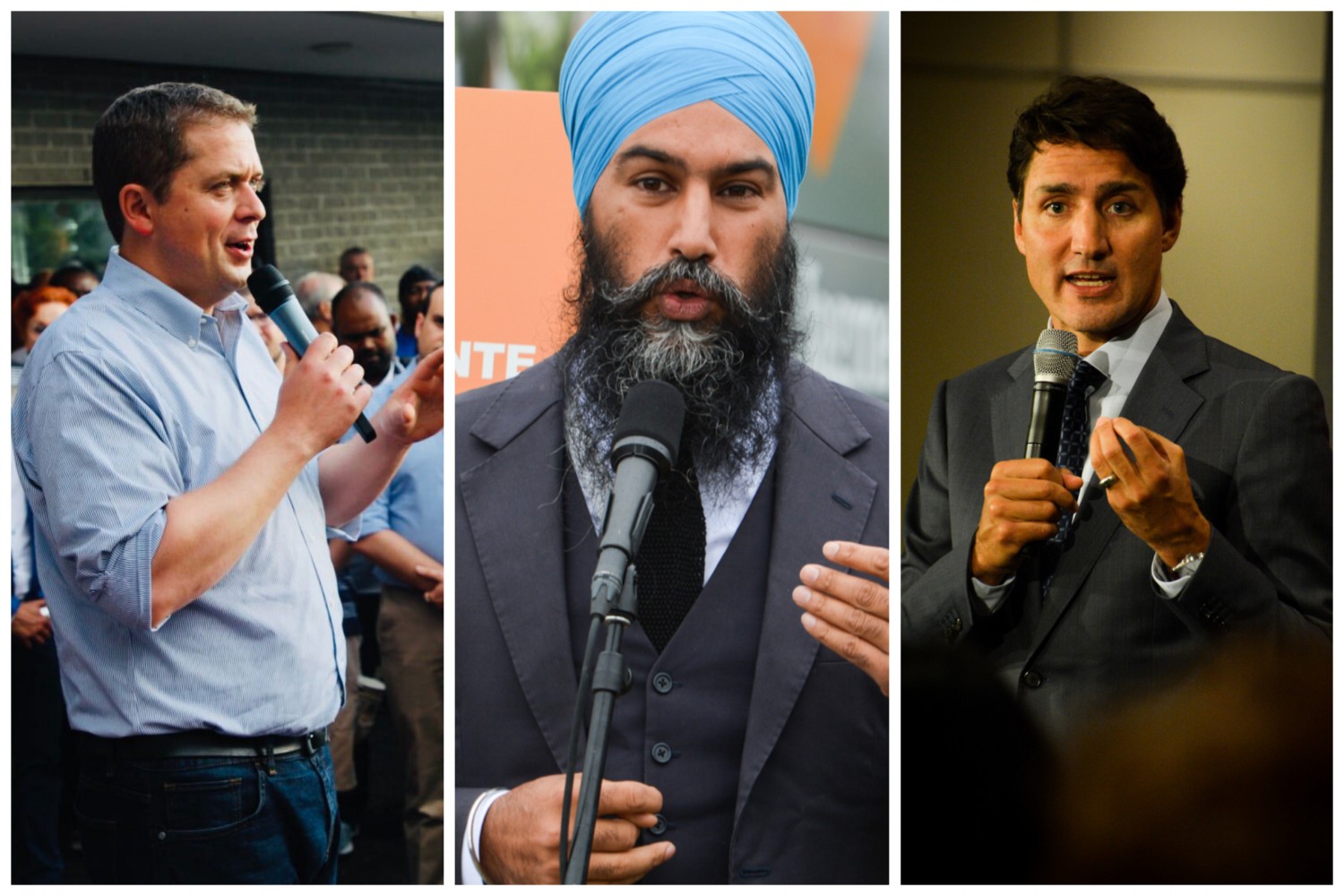
The problem with polling in Peel
Mississauga and Brampton are two of the most valuable cities in the 2019 federal election, having been visited repeatedly by party leaders eager to snatch up their 11 ridings. But despite the ferocity of the contest here, local voters don’t have a clear picture of how well those parties are faring.
Peel Region is a polling desert. Next to no surveys have been conducted specifically for local residents, asking them which parties will have their vote on October 21. Most large pollsters and aggregators, such as CBC’s Poll Tracker, provide coast-to-coast data with insights broken down by province. Organizations occasionally produce more localized surveys for areas such as the GTA and 905, but even that region includes dozens of diverse ridings.
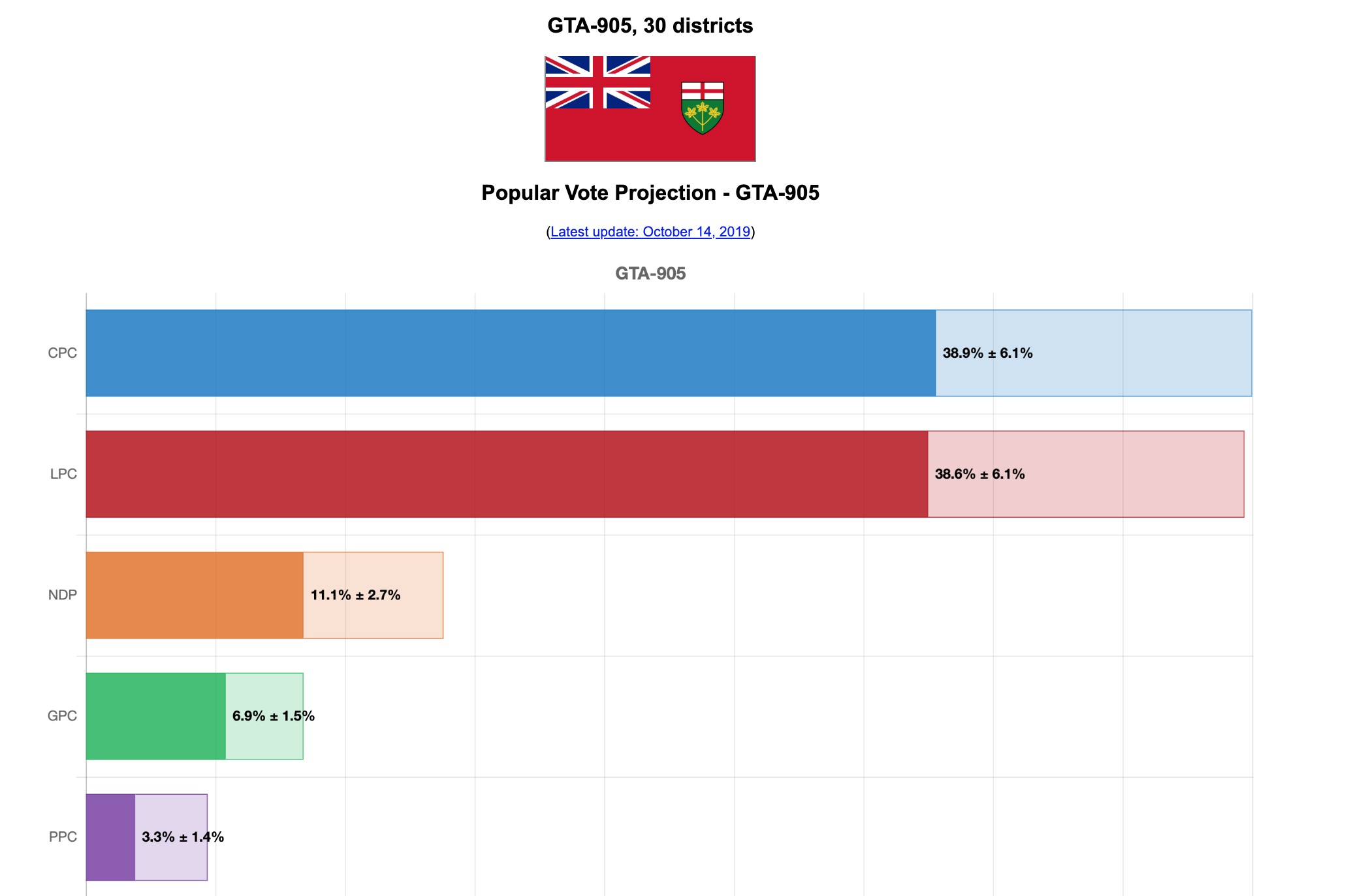
A regional projection from 338Canada.com, as of October 15, 2019 (there are 32 ridings in the 905)
The dominant public source providing riding-by-riding data is 338Canada, which has been cited by The Hill Times, Edmonton Sun and The Pointer itself throughout the election campaign. Created and operated by Philippe J. Fournier, a physics and astronomy professor by day and polling celebrity by night, the website forecasts results in individual ridings by reworking national data.
It’s currently projecting a strong showing for the Liberal Party in Peel, but that conclusion is a very sophisticated guess.
Fournier posted an explanation of his methodology online in November 2018, though changes could have occured since. He explained that, at a basic level, a 10 percent increase in support for a party nationally would increase the numbers in any district by the same degree. However, 338Canada also uses a formula that takes into account demographic data — such as median household income, languages spoken and education levels — from Statistics Canada to project results at a local level. The data is further tweaked at the riding level by examining the “star” power of candidates — take Minister Navdeep Bains in Mississauga-Malton, for example — as well as historical results.
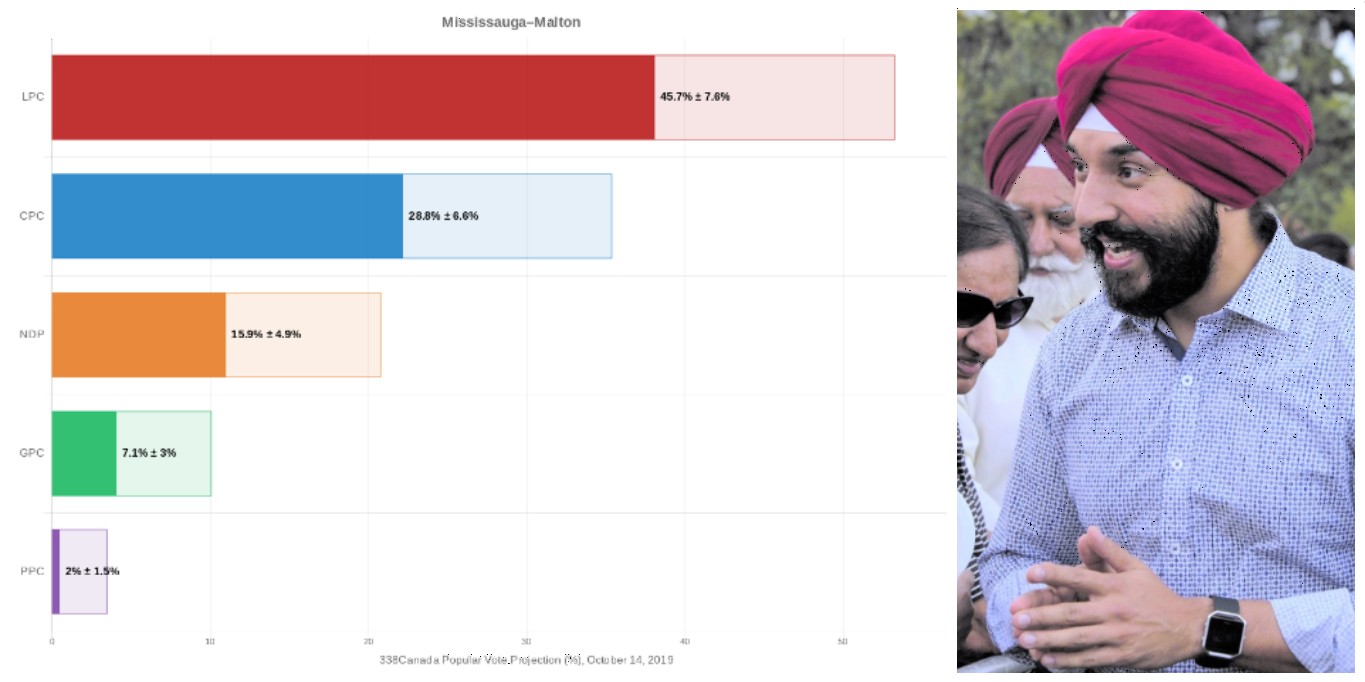
338Canada has Minister Navdeep Bains well ahead in Mississauga-Malton
According to 338Canada, Fournier decided to tackle the federal election after enjoying a “certain degree of success” during the Ontario and Quebec provincial elections. In Ontario, Fournier said, he correctly called 111 of 124 ridings the night before. It’s unclear how accurate projections were weeks or days before polling.
However, as national pollsters regularly warn voters, riding projections are not polls. 338Canada does not ask voters directly about their opinion. Its projections commonly display margins of error that exceed 7 percent and do not explicitly state a confidence level.
Nanos Research’s most recent national poll for CTV and The Globe and Mail has a margin of error of 2.8 percent, with a confidence level of 19 times out of 20. Abacus Data’s most recent national poll has a margin of 1.9 percent, 19 times out of 20. The equivalent from the Angus Reid Institute has a margin of error of 1.8 percent, 19 times out of 20.
Fournier did not respond to multiple requests for comment.
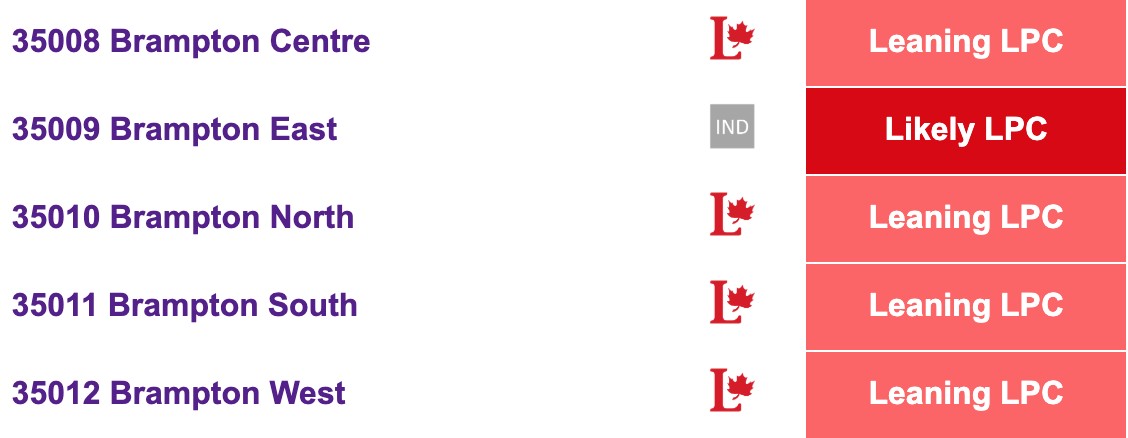
338Canada's projections for Brampton, as of October 15, 2019
According to 338Canada, the Liberals hold solid leads across all five of Brampton’s ridings, while three of Mississauga’s ridings are also leaning red. 338Canada would suggest that Mississauga-Streetsville, Mississauga-Erin Mills and Mississauga-Lakeshore are tossups between the Liberals and Andrew Scheer’s Conservatives.
However, candidates may see a different story. In the buildup to elections, political parties commission their own private, professional polling at the riding level and supplement that information with data collected while door knocking.
Political parties use that information to decide which ridings to target; they typically do not devote much energy to lost causes or sure victories. Conversely, a flurry of activity can indicate a push to clinch a close race.
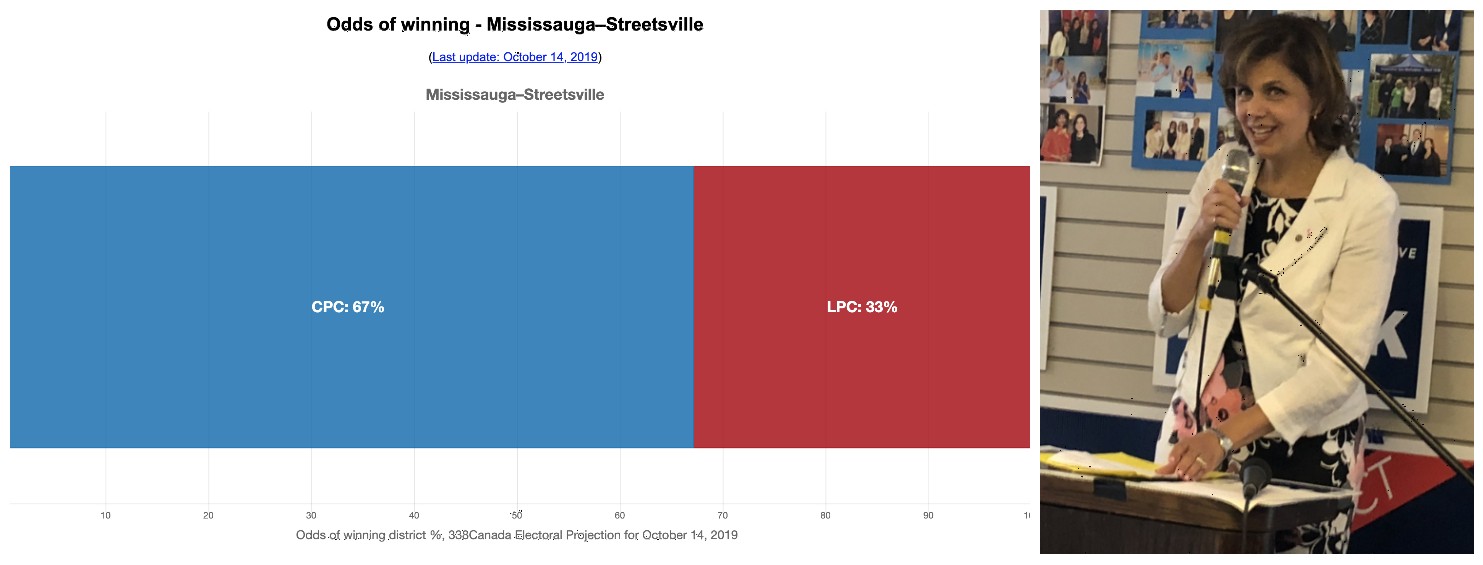
338Canada's projections for Mississauga-Streetsville — one of the only tossups — put the Conservatives' Ghada Melek as the likely winner as of October 15, 2019.
In Brampton, for example, the New Democrats are campaigning with a confidence and organization that suggests they know something 338Canada doesn’t. All-candidate announcements have been a regular fixture of the campaign there; in Mississauga some candidates have yet to set up contact information through the party’s website.
In Brampton East, where Leader Jagmeet Singh used to work as an MPP, the push has been even stronger. Most recently, the party leader attended a “get out the vote” event for candidate Saranjit Singh on Saturday. While 338Canada has given Liberal candidate Maninder Sidhu a 16-point lead, a source close to the NDP’s Team Brampton campaign — speaking on condition of anonymity — said their internal polling shows Saranjit Singh is doing significantly better than public sources suggest and may actually be out in front.
The Conservatives too have high hopes for Brampton East, recently rolling out former attorney general Peter MacKay for a campaign event. Their local candidate, Ramona Singh, has been granted two campaign managers from Ottawa.
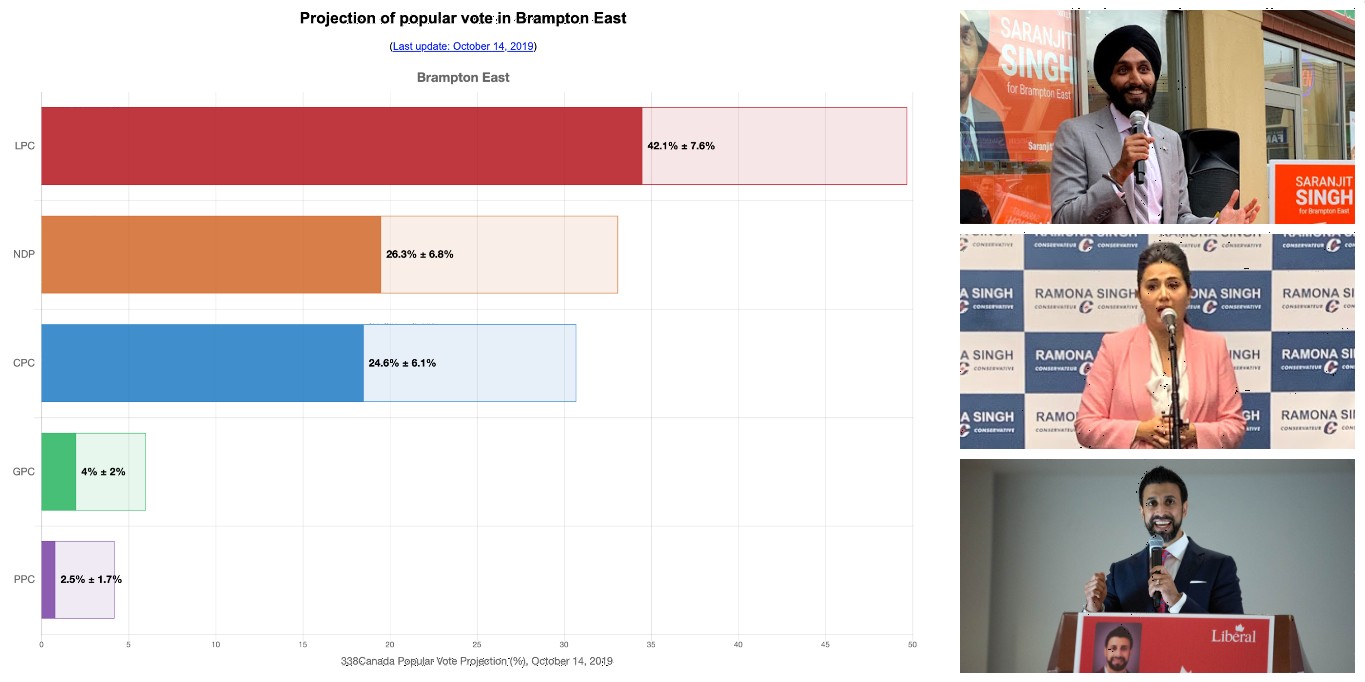
Though 338Canada puts Liberal candidate Maninder Sidhu well in the lead, a source close to the NDP says their internal polling puts Saranjit Singh ahead of both Sidhu and the Conservatives' Ramona Singh.
Early in the campaign, Conservative Leader Scheer visited Brampton North candidate Arpan Khanna. However, after another visit to Brampton Centre, Scheer has more recently been in Mississauga-Lakeshore, where candidate Stella Ambler lost by fewer than 4,000 votes in 2015. Alberta Premier Jason Kenney was also rolled out at a constituency campaign event to boost Ambler’s hopes.
Despite their candidates winning by large margins in 2015, the Liberal campaign is not neglecting the two cities. One potential indicator of Liberal nerves is Leader Justin Trudeau’s three visits to Mississauga. Most notably, Trudeau chose the University of Toronto Mississauga campus to unveil his party’s entire platform.
These signs all offer insight into which candidates are performing well and which races are too close to call. For residents who plan to vote tactically on Oct. 21, it’s wise to apply some local logic to any public projections.
Email: [email protected] / [email protected]
Twitter: @isaaccallan / @mansoortanweer
Submit a correction about this story


